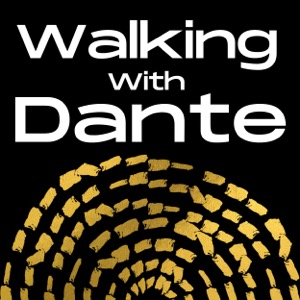A Look Back At The First Four Cantos of INFERNO
Walking With Dante - Podcast autorstwa Mark Scarbrough

Kategorie:
In this episode of WALKING WITH DANTE, join me, Mark Scarbrough, as I look back over the first four cantos of INFERNO, an overview of where we've been and a discussion of the structure of the poem, COMEDY.I'll talk about some of the architectural details of the work's creation, about the ways that the reading of COMEDY may be more complex than you might have imagined, and about the reasons Limbo is so very strange in Dante's masterwork.There's no specific passage from COMEDY in this episode. Rather, it's an attempt to get the big picture of where we've walked so far in the journey.Here are the segments for this episode:[01:05] A plot summary of the first four cantos of INFERNO--at first rather silly (wow, fast!) and then more detailed, so we can lay the groundwork of how COMEDY operates on a grander scale.[05:15] Thoughts about the larger architecture of those first four cantos: mostly about antinomies (or oppositions) in them.[09:16] A look back the at the uneasy relationship I see between allegory and realism (for lack of better words) in the first four cantos--and the ways in which my reading is limited to my Anglo-American, neo-rationalist perspective while those of others take in deeper understandings of the allegorical and even anagogical readings of the text. Sounds deep, but I'm really setting you up to start to see COMEDY on four different levels at once, about the way a medieval reader would (and certainly the way Dante-the-poet hopes you will).[15:02] The first three (of four) reasons why COMEDY supports so many disparate and even contradictory interpretations.[20:47] My final reason for the interpretive strangeness of COMEDY: because Dante-the-poet is constantly moving the fence of his understanding of the world around him. Why? Because of Beatrice. Because of love. Love always moves the fence.
